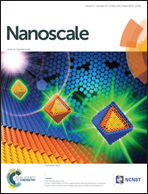Monitoring of the tumor response to nano-graphene oxide-mediated photothermal/photodynamic therapy by diffusion-weighted and BOLD MRI
Abstract
Photothermal therapy (PTT) and photodynamic therapy (PDT) are promising cancer treatment modalities. Because each modality has its own set of advantages and limitations, there has been interest in developing methods that can co-deliver the two regimens for enhanced tumor treatment. Among the efforts, nano-graphene oxide-mediated phototherapies have recently attracted much attention. Nano-graphene oxide has a broad absorbance spectrum and can be loaded with photosensitizers, such as chlorin e6, with high efficiency. Chlorin e6-loaded and PEGylated nano-graphene (GO-PEG-Ce6) can be excited at 660 nm, 808 nm, or both, to induce PDT, PTT, or PDT/PTT combination. Despite the potential of the treatments, there is a lack of a diagnostic tool which can monitor their therapeutic response in a non-invasive and prognostic manner; such an ability is urgently needed for the transformation and translation of the technologies. In this study, we performed diffusion-weighted and blood oxygenation level dependent (BOLD) magnetic resonance imaging (MRI) after GO-PEG-Ce6-mediated PTT, PDT, or PTT/PDT. We found that after efficient PTT, there is a significant increase of the tumor apparent diffusion coefficient (ADC) value in diffusion-weighted imaging (DWI) maps; meanwhile, an efficient PDT led to an increase of  in BOLD images. In both the cases, the amplitude of the
in BOLD images. In both the cases, the amplitude of the  increase was correlated with the treatment outcomes. More interestingly, a synergistic treatment efficacy was observed when the PTT/PDT combination was applied, and the combination was associated with a greater ADC and
increase was correlated with the treatment outcomes. More interestingly, a synergistic treatment efficacy was observed when the PTT/PDT combination was applied, and the combination was associated with a greater ADC and  increase than when either modality was used alone. In particular, the PTT/PDT condition that induced the most dramatic short-term increase of the ADC value (>70%) caused the most effective tumor control in the long-run, with 60% of the treated animals being tumor-free after 60 days. These results suggest the great promise of the combination of DWI and BOLD MRI as a tool for accurate monitoring and prognosis of phototherapies, which is of great value to the future developments of the methodologies.
increase than when either modality was used alone. In particular, the PTT/PDT condition that induced the most dramatic short-term increase of the ADC value (>70%) caused the most effective tumor control in the long-run, with 60% of the treated animals being tumor-free after 60 days. These results suggest the great promise of the combination of DWI and BOLD MRI as a tool for accurate monitoring and prognosis of phototherapies, which is of great value to the future developments of the methodologies.


 Please wait while we load your content...
Please wait while we load your content...